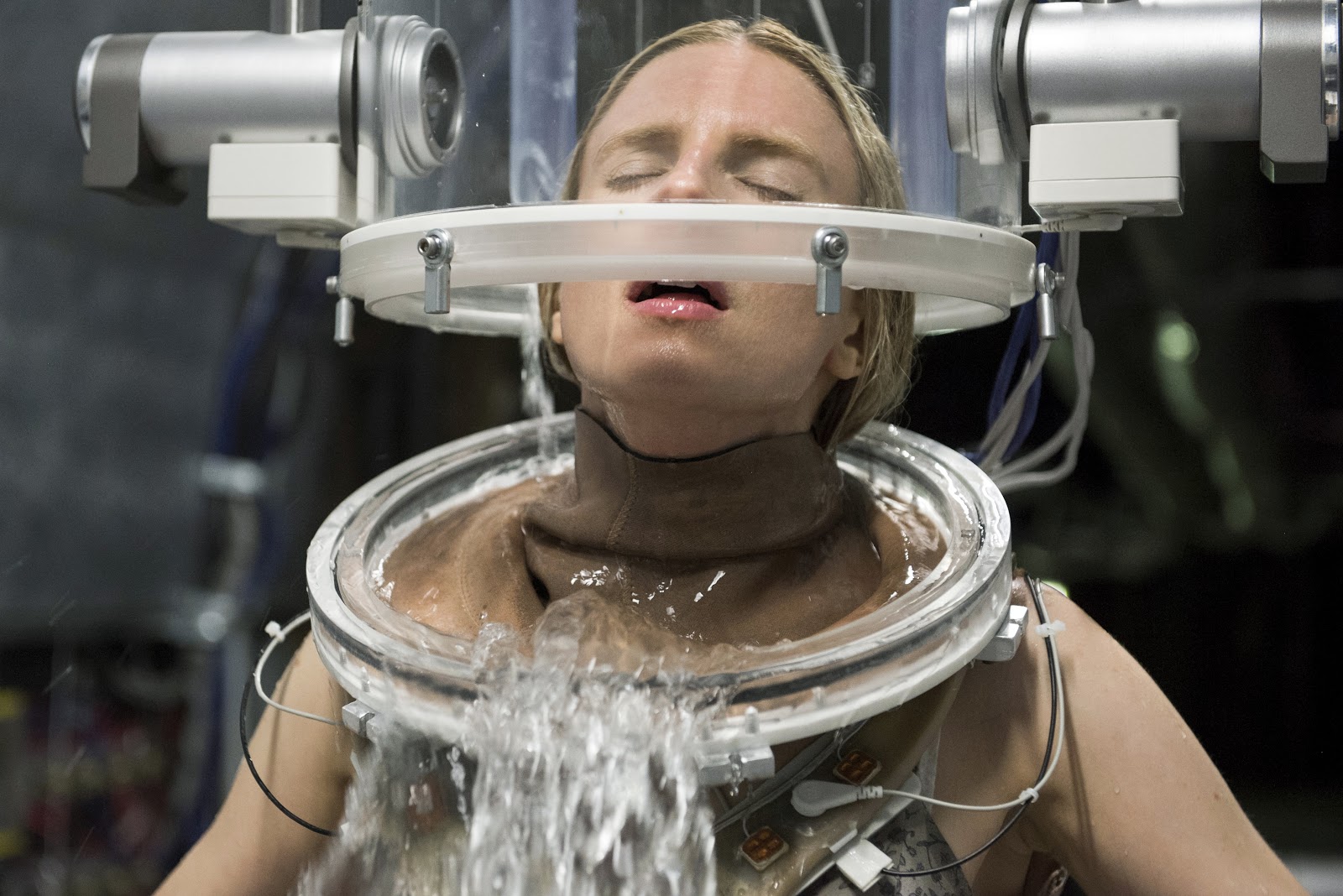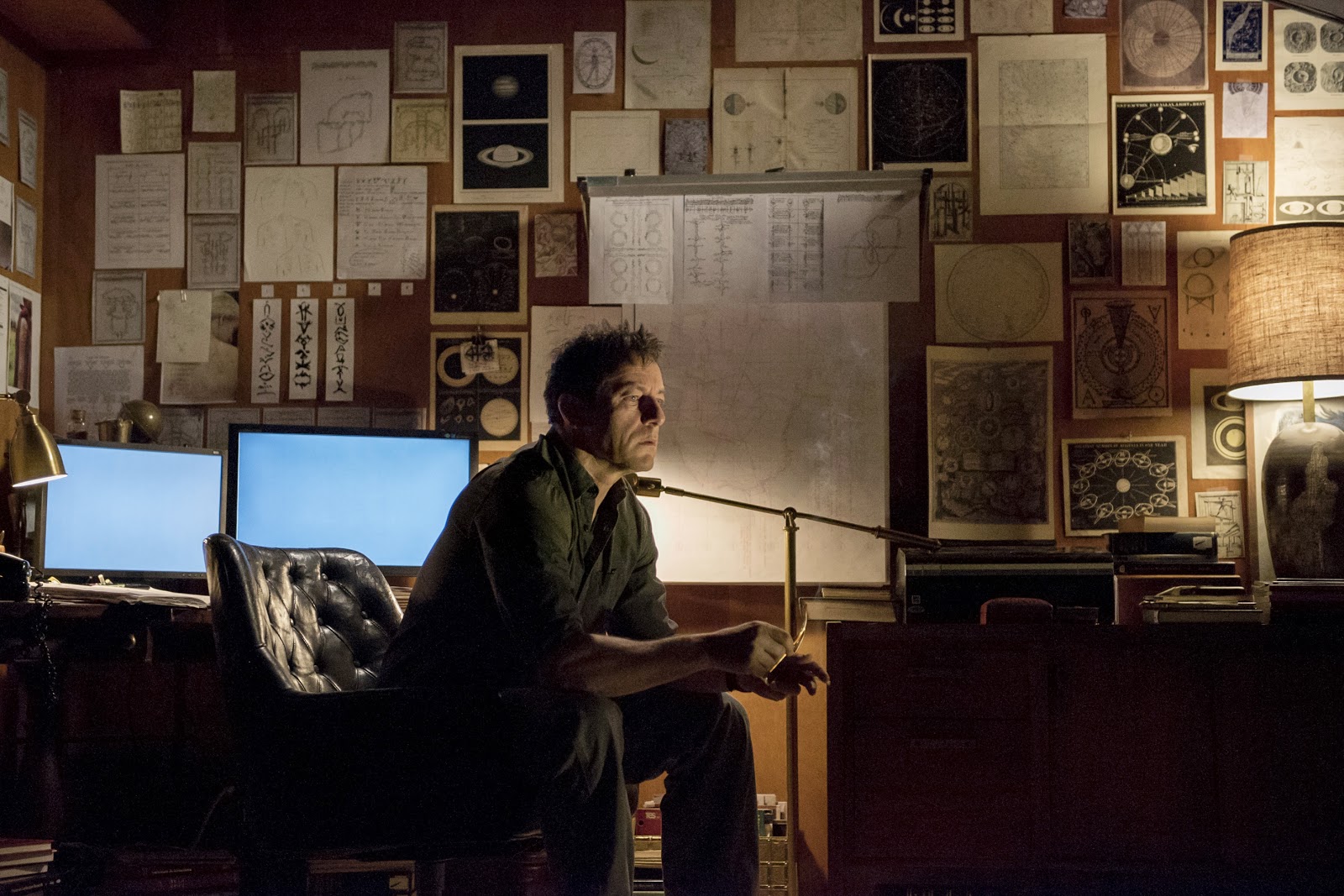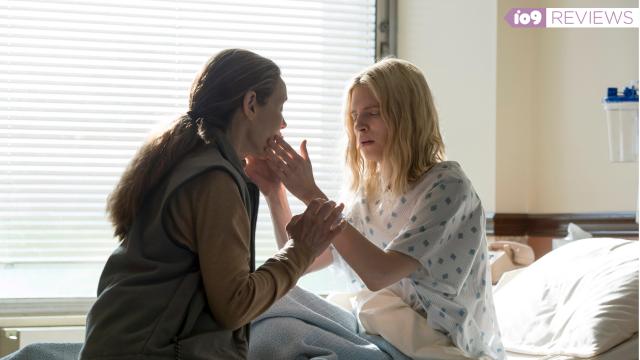The OA is supposed to be a surprise. The existence of Netflix’s eight-part series was a stealth announcement last week, with none of the months-long fanfare that accompanies its other shows. The air of mystery lis part of the show, too, resulting in an experience you’re either going to love or hate. Personally, I can’t remember the last time that I liked something that I should have hated so much. Spoilers ahead!

Co-created by Brit Marling and Val Batmanglij, The OA revolves around the sudden reappearance of Prairie Johnson, a young blind woman who went missing seven years ago. After being brought home to the older couple who adopted her, she exhibits odd behaviour and has weird dreams that lead her to gather four high-school students and one teacher. The kids — a bully /drug dealer, the trans boy he sells testosterone to, an overextended honour student, and a goofy stoner — hear Prairie tell the story of her life every night as preparation for the goal she’s trying to achieve: piercing “the border of somewhere that’s hard to get to” and reuniting with someone she became close to while in captivity.
Two stories unfold over the series’ span: viewers watch Prairie try to fit back in the bland suburban world of her skittish parents, while also getting the firsthand account of her imprisonment as told to the students and teacher. Prairie’s disappearance came at the hands of a scientist-doctor nicknamed Hap, who is obsessed with near-death experiences (NDEs). Prairie and Hap’s other captives who’ve experienced NDEs come back with new/improved skills like singing with uncanny beauty or, in Prairie’s case, regaining the ability to see.
The sections of the show set in Hap’s remote lab felt strongest. Jason Isaacs’ performance as Hap pulls the character away from “evil scientist” stereotype and sketches out a man suffused with mania, guilt, loneliness, ego, and sadism. Hap’s research discovers that people who came back from death once can do so again, with presumably less difficulty. The NDE survivors he’s abducted are the perfect lab rats because he can kill them over and over again and they will come back. He uses the data gleaned from their successive deaths to try and map out what’s on the other side of death. The terror that his captives feel is driven home effectively and Prairie’s bonding with these other captives is the heartfelt and painful anchor of the show.

The tension at the core of The OA is all about the nature of belief and whether it can save lives. Its story-within-a-story structure gestures at the Judeo-Christian Bible and other holy texts, and the show is built around how a person who’s also pierced the veil and come back can help people who’ve stalled in their own journeys.
Some of the component parts in The OA will feel overly familiar. It leans on drily-presented small-town, team-of-misfits weirdness like Stranger Things and teases a bunch of cosmological scifi tropes like Fringe and Lost did before it. The audience is teased with the possibility that Prairie’s near-death experience let her travel to either heaven or alternate dimensions. Marling’s performance is full of trembling body language and halting, unsure physicality. After coming back to the land of the living, she’s a low-intensity Dream Girl, seeing inside people with eerie insight. Some of the kids also spout off with Deep Thoughts that belie their teenage years.
Here are some of the things that characters say during the eight episodes:
- Hap, while charming Prairie into initially trusting him: “I just didn’t understand why I wasn’t supposed to ask the questions that had no answers. They’re the most interesting questions, aren’t they? What is consciousness? Where does consciousness go after… you know, after this place?”
- Prairie, talking to bully Steve about his angst over a girl: “You don’t want to go there until your invisible self is more developed anyway. You know, your… longings, the desires you don’t tell anyone about.”
- Prairie: “Being blind was powerful. It made me listen. And it made people underestimate me.”
- Prairie, when posing as a kid’s step-mother to deal with his school problems: “This dimension is crumbling to violence and pettiness and greed and Steve is sensitive enough to feel it and he’s angry.”
- Prairie, when faced with the choice to stay in the “other place” or to come back to life: “That isn’t a fair choice.” Other character: “To exist… is to survive unfair choices”
- Jesse the stoner to his teacher: “…some people don’t belong in a family. Like, they don’t know what it is. How to be… helped by it.”
The self-aware streak of mindfulness messaging even pops up in minor characters, like when the journalist wanting to write about Prairie’s life says “storytelling is cleansing.”
As groan-inducing as some of that is, I like how abjectly earnest The OA is. Plot-wise, things move at a slow pace but, in terms of its thematic purpose, the Netflix show careens with the hippy-dippy equivalent of lightspeed. From the very beginning, Marling and Batmanglij heave handfuls of granola-crusted philosophy at viewers. Some of the stuff OA says comes off like a smoothie made from The Five Agreements, The Alchemist, Grant Morrison’s Doom Patrol comics, and Twilight Zone scripts from another dimension.

Yet it serves up the sort of spiritualism that often gets minimized in scifi genre work. My biggest quibble with Dr. Strange was how it felt more content to throw quips at its main character’s soul-sickness than actually deal with it head on. The OA‘s earnestness is what stopped me from laughing it out of the room. It honest-to-goodness feels like a show made by people who think watching a science fiction TV series will make people feel better. The philosophical weightlessness of the show will either annoy you or pull you in.
I came to The OA more for the ponderousness than for an adventure pastiche but I still found myself swinging back and forth between those two poles: melting in empathy with its gooey, college-sophomore musings and impatiently wanting to get back to the grounded drama of the people Prairie has tethered herself to.
The OA invokes the scifi genre trick of keeping the audience just enough in the dark to feel mysterious and full of portent, while simultaneously doling out crumbs of information to fuel a continuous speculation loop in viewers’ heads. But its heavyhandedness undercuts some of that. The main character and the high-school bunch exclusively refer to her as the OA (pronounced Oh-Ay) and, with symbolism heavily invoking metaphors of death and resurrection, I figured out what the initials meant long before its dramatic reveal.
Depending on what you engage with the show, its ending will make you ask more questions or run to Twitter to mock it. Dependent on an unheralded act of gun violence, the finale can be interpreted as an enormous dodge of the logic sown throughout in the build-up, but it can also be interpreted the other way, too, as a prophecy come true in an outré way. But even if you want to believe in the show’s ethos, the lack of closure feels like a calculated ploy to avoid delivering a concrete answer to its central mystery. I’d hate to think that something so prosaic as hopes for a second-season pick-up is behind the vague denouement but I can’t dismiss the possibility, either.

Overall, the series feels engineered to touch on primal energies of human existence. It’s centered around characters huddling in a dark place with just enough light and heat, listening to someone talk about their life with the hopes that the act will explain the universe. It winds its own recursive storytelling around itself backwards and forwards in its characters’ lives, unafraid of sounding like mumbo-jumbo. It unabashedly floats platitudes and melodrama at the audience, while also challenging them to binge-watch something based on grief.
As much as I feel compelled to, I can’t hate this experimental TV series that scooped out an endearingly bizarre niche out of a pile of treacle.
